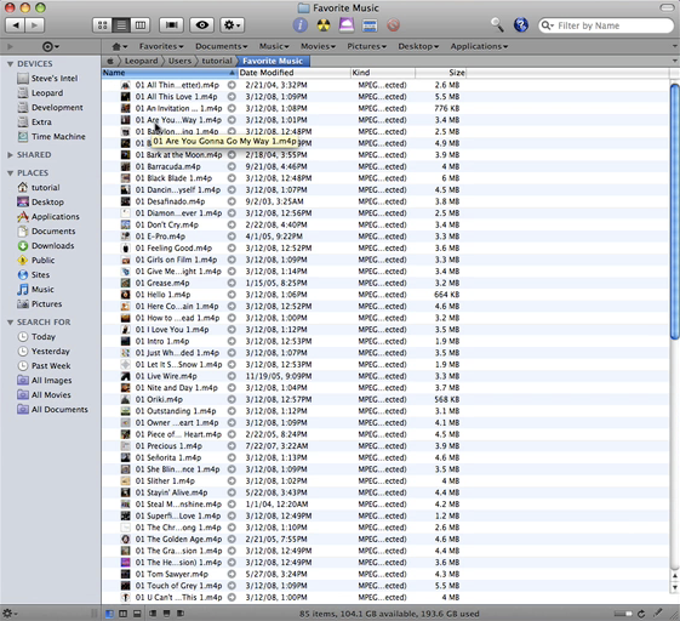

Use Command + Control + Shift + T to add a file or folder in the Finder to your dock. In related news, you can hit Command + Shift + Delete to empty the trash. Instead, select the files or folders in the Finder you'd like to trash and hit Command + Delete. Save yourself the trouble of dragging a file to the trash can in your dock. Just like on your desktop, you can use the Command + Shift + N keyboard shortcut to create a new folder in the Finder. If you hold down Option + spacebar, you can open a full-screen slide of the file. If you click on a file once, to highlight it, and then hit the spacebar, you can check out a preview of it. You can always double-click a file to view it, obviously, but there is a way to simply preview it. You can set different columns to show for different folders in the Finder. This lets you choose, among other things, the types of columns - Date Modified, Size, Tags and so on - that you want to see for the Finder's column view. Hit Command + J to open the View Options panel. Alternatively, you can use keyboard shortcuts: You can change the view of the Finder by clicking the four buttons in the menu bar at the top of a Finder window. If you want to hide or show it, hit Command + Option + P. It's the narrow bar along the bottom edge of the Finder, which shows you the folder path to the file you currently have selected. The Finder has another information bar in addition to the sidebar: the path bar. Hit Command-Control-T to add a selected item - a folder, usually - to the sidebar. If you need a cleaner view, use Command + Option + S to show or hide the Finder's sidebar. Need more information about a file or folder, such as file kind, folder size, date created or last modified? You can hit Command + I to open the Get Info panel for any selected file. Get info about a file or folder in the Finder Quickly search for a file or folder in the FinderĪlthough you can click on the magnifying glass in the top-right corner of any Finder window to search for a file folder, you can also use the keyboard shortcut Command + F to open the Finder with the search bar already activated.

If you click the Advanced tab in Preferences, you'll see a number of boxes to check, including Remove items from the Trash after 30 days. And then go to File > Save to save your text file.įound this useful guide from macReports website.Automatically remove items from the Trash.txt file (plain text), your document will lose all formatting options. You can also change the mode while you editing your text by going to Format > Make Plain Text or Format > Make Rich Text.You can change this by going to TextEdit > Preferences and select Plain Text. rtf mode will let you format like adding images, colors, tables etc. txt mode will not allow formatting, while. TextEdit has two format modes: (a) plain text (.txt file) and (b) rich text (.rtf file). In the TextEdit app, choose File > Open.TextEdit is a text editing and word processing tool that comes with your Mac. Open the TextEdit app on your Mac (Applications > TextEdit, or use Spotlight, press Command-Space bar, to search, find and open TextEdit).If button returned of dDlg = "Copy" then set the clipboard to e Set txt to make new file at (the target of the front window) as alias with properties default button "OK"

Replace ALL the purple script with: tell application "Finder" In Automator, create a new Quick Action (previously called a Service):įrom the left side, click Utilities then drag "Run Applescript" over to the right panel.Ĭhange the two pulldown menus at the top of the right panel to read: Part 1: Create a new Quick Action (was Service) The simplest version does not require a file or folder to be selected, and adds a keyboard shortcut of your choice.


 0 kommentar(er)
0 kommentar(er)
